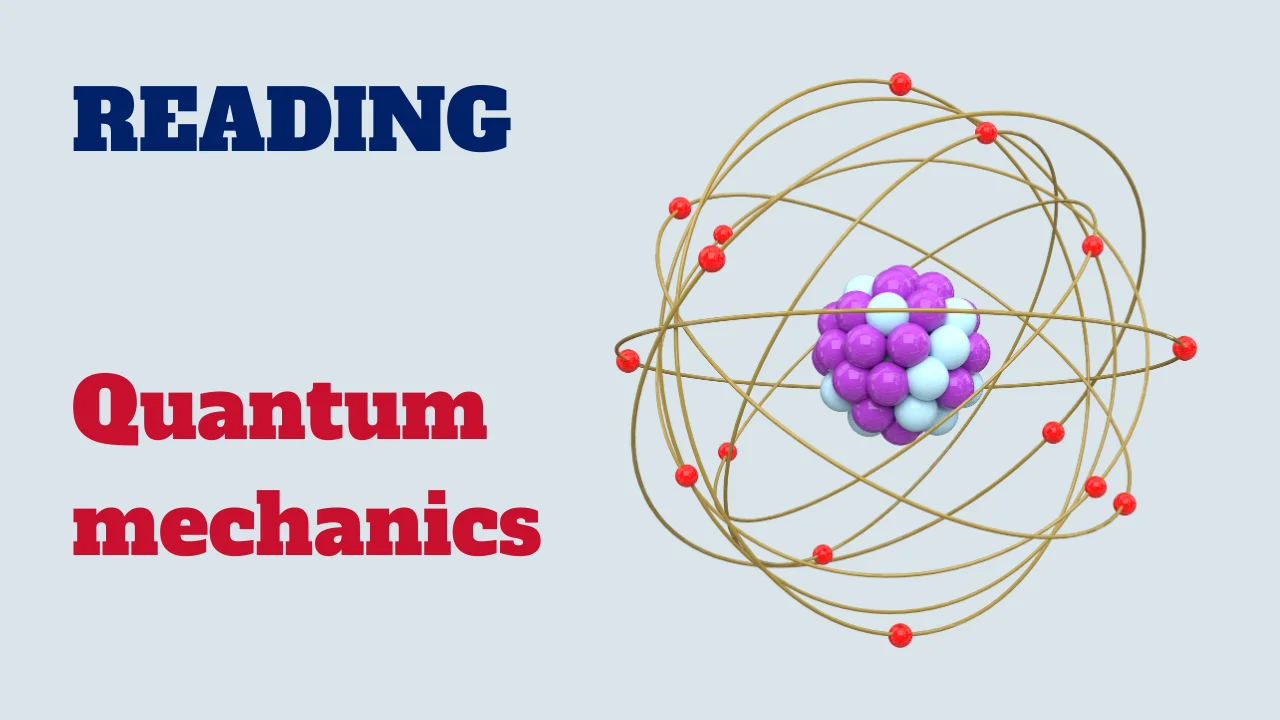Welcome to a reading activity about quantum mechanics, the fundamental theory in physics that revolutionized our understanding of nature at the atomic and subatomic scales.

In this reading activity, we’ll delve into the principles and implications of quantum mechanics, exploring its role in various fields of science and technology.
Text: Quantum mechanics
Quantum mechanics is a foundational theory in physics that describes the behavior of particles at the smallest scales, providing a framework for understanding the fundamental nature of matter and energy. Developed in the early 20th century, quantum mechanics revolutionized our understanding of the universe, challenging classical notions of determinism and causality.
At the heart of quantum mechanics is the principle of wave-particle duality, which posits that particles such as electrons and photons can exhibit both particle-like and wave-like properties. This duality is encapsulated in the wave function, a mathematical expression that describes the probability distribution of a particle’s position, momentum, and other observable properties.
One of the most striking features of quantum mechanics is the phenomenon of superposition, where particles can exist in multiple states simultaneously until they are observed or measured. This concept is famously illustrated by Schrödinger’s thought experiment involving a cat in a box, which can be both alive and dead until the box is opened and the cat’s state is observed.
Another key principle of quantum mechanics is entanglement, which occurs when particles become correlated in such a way that the state of one particle is instantaneously linked to the state of another, regardless of the distance between them. This phenomenon, famously described by Einstein as “spooky action at a distance,” has been experimentally verified and forms the basis for quantum technologies such as quantum computing and quantum cryptography.
Quantum mechanics also introduces the concept of uncertainty, embodied in Heisenberg’s uncertainty principle, which states that the more precisely the position of a particle is known, the less precisely its momentum can be determined, and vice versa. This inherent uncertainty places fundamental limits on our ability to predict the behavior of quantum systems and underscores the probabilistic nature of quantum mechanics.
Despite its conceptual challenges and counterintuitive predictions, quantum mechanics has been incredibly successful in explaining a wide range of phenomena, from the behavior of atoms and molecules to the properties of materials and the workings of the universe at the most fundamental level. It forms the basis for much of modern physics and continues to inspire groundbreaking research and technological innovation in fields ranging from quantum computing and cryptography to quantum teleportation and quantum sensing.
Comprehension questions
Congratulations on completing the exploration of quantum mechanics! By delving into its principles and historical context, we’ve gained a deeper understanding of this fundamental theory and its significance in the realm of physics and beyond. Let’s continue to marvel at the mysteries of the quantum world and its profound implications for our understanding of nature.



